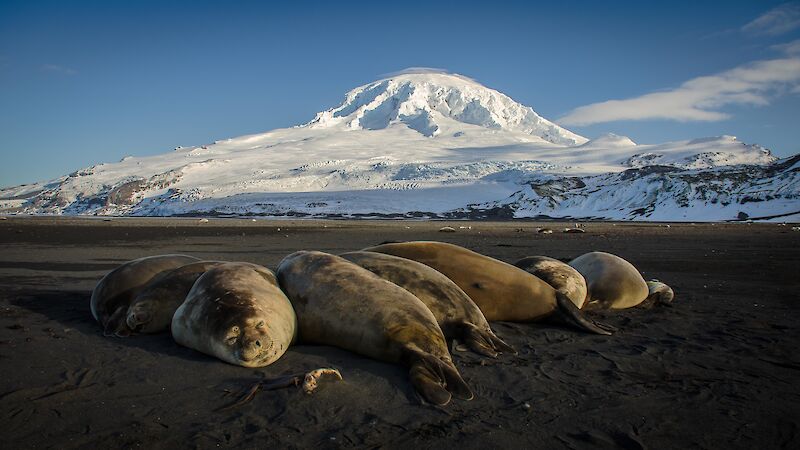Size does matter – at least when you’re an elephant seal pup, according to research published in the Journal of Zoology.
Sydney Institute of Marine Science biologist Dr Clive McMahon, and his colleagues, found that ‘length at weaning’ was important in determining the survival rate of southern elephant seal pups on Heard Island.
Analysing historical data collected at the subantarctic island between 1949 and 1954 by the early Australian National Antarctic Research Expeditions, Dr McMahon’s team found that seals that were longer at weaning (about 24 days old) were more likely to survive than their shorter contemporaries. They also found that the seals were larger when environmental conditions were better.
‘We found that length is an important determinant of seal survival and that pup size is determined by the prevailing conditions a mother experiences while she is pregnant. So when conditions are good, mothers produce bigger pups and these pups have higher survival rates,’ Dr McMahon said.
The study provides an insight into why the elephant seal population at Heard Island declined by 47% between 1949 and 1985.
‘Attempts to explain this population decrease have previously relied on information gathered from studying other elephant seal populations, rather than data from the Heard Island population,’ Dr McMahon said.
‘This new study used mark-recapture data from 1477 weaned southern elephant seal pups that were captured, measured and resighted multiple times, on Heard Island, Marion Island and Antarctica’s Davis station.
‘The observations from the data provide valuable information, suggesting that the decrease in seal numbers at Heard Island was driven largely by change in prevailing environmental conditions.’
Like the Heard Island population, elephant seals at Macquarie Island also declined between the 1950s and 1980s and continued to decline by a further 25% between 1988 and 2009, when the last whole island census was undertaken. The most likely cause is thought to be related to changes in the seals’ foraging habitat and subsequent food availability (Australian Antarctic Magazine 26: 18, 2014).
Dr McMahon said conditions seem to have improved in the Southern Indian Ocean, unlike at Macquarie Island, so that overall juvenile survival at Heard Island has increased in recent years, resulting in more recruitment into the breeding population. This increase in juvenile survival and recruitment has resulted in a stabilisation of the Heard Island population.
Dr McMahon said the study showed how contemporary analytical tools could be used to re-examine historic data to gain deeper insights into population behaviour and answer bigger questions about an ecosystem. The research will contribute to management measures for southern elephant seals and models to predict how animals may be affected by future change in their environments.
More information
McMahon C. R., New L. F., Fairley E. J. et al. (2015). The effects of body size and climate on post-weaning survival of elephant seals at Heard Island. Journal of Zoology. doi: 10.1111/jzo.12279

